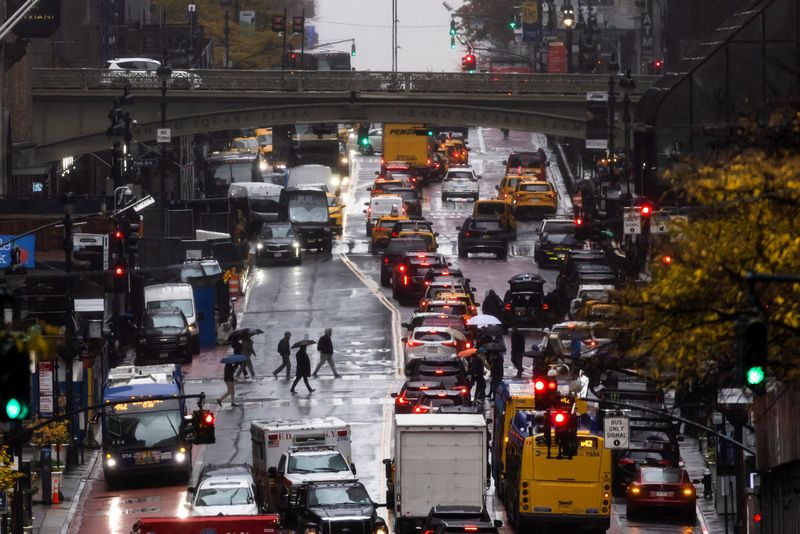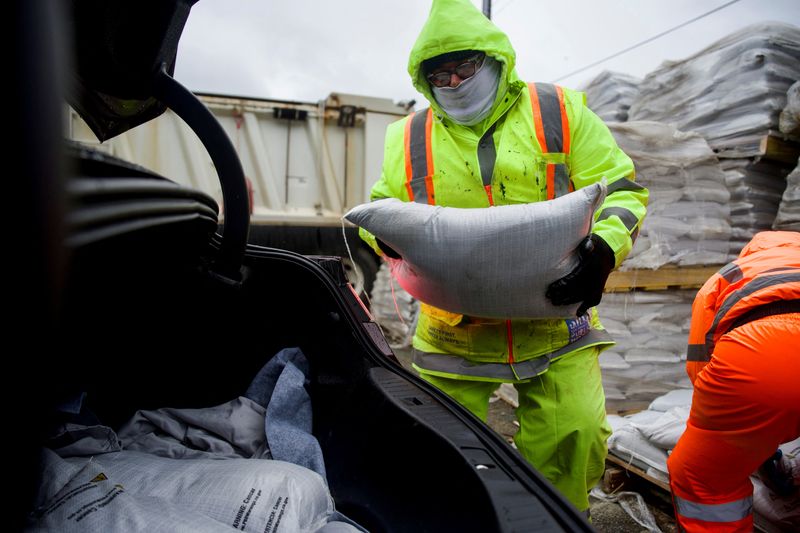By Rich McKay
(Reuters) -A second powerful wind storm, called a "bomb cyclone," will hit the U.S. Pacific Northwest by Thursday evening, even as hundreds of thousands of people remain without power from the torrential rain and snow still falling from the first one.
The first bout of winds had eased across the region of southwest Washington and Oregon by midday on Wednesday in a system pushed into the U.S. by the first "atmospheric river" storm of the season.
But images of cars and houses crushed by fallen trees in Washington filled social media. Two women died in separate incidents of tree falls near Seattle and others were injured.
About 260,000 homes and businesses remained without power in Washington, Oregon and Northern California on Thursday afternoon, down from 600,000 earlier.
The windstorm and heavy rain also damaged the power system in Canada's Pacific coast province of British Columbia and cut power to some 225,000 customers on Tuesday night, according to provincial electricity provider BC Hydro.
By Wednesday evening, about 64,000 customers, mostly on Vancouver Island, remained without power.
About 11 inches of rain had already fallen on Wednesday and overnight into Thursday in Northern California, bringing several feet of snow in higher elevations, said Rich Otto, a forecaster with the National Weather Service's Weather Prediction Center.
Otto said the storm was stalled over northern California and was going to bring another 5-to-10 inches of rain.
The worst of the rain covers a coastal strip from southwest Oregon, through Northern California to the North Bay region near San Francisco.
Wind gusts of 65 mph (105 kph) were expected on Thursday evening, and risks of life-threatening flooding, mud and rock slides remained throughout the region, the NWS warned.
About a dozen small landslides had struck in northern California late on Wednesday into early Thursday, the National Weather Service said.
The Sierra Nevada peaks near Lake Tahoe could receive as much as 5 feet of snow this weekend, the NWS said.

The wind storms, called bomb cyclones, occur when they rapidly intensify in 24 hours or fewer when a cold air mass from the polar region collides with warm tropical air in a process that meteorologists call bombogenesis.
The rain will continue over Northern California and southwestern Oregon in the next few days, Otto said, not easing until Saturday.
